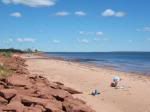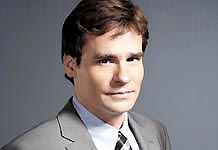I never would have found this wonderful book without the Women in Science challenge this month, so thank you DoingDewey for hosting. This might be my favourite book of the year!
First of all, look at this wonderful cover. Three girls, faces hidden, as these unfamous/unknown women would become. The white sketches around the edges represent the science that each studied.
Weirdly, I liked this even though it is written in blank verse. This is the first book I've read like this and it would never be my first choice, but it seems to work here. It might be that using blank verse to tell a science story employs both parts of my brain. I like literature and science and to get both at the same time is pretty cool.
The three girls are Maria Sibylla Merian from the late 1600s in Germany; Mary Anning from the early 1800s, in England; and Maria Mitchell from 1800s America. Nice balance of eras and countries, and subjects - creatures, earth and sky. Atkins does an amazing job of balancing the facts with the story, the science with the life.
Maria Sibylla Merian was the Painter's Daughter who studied caterpillars and moths and butterflies. Recognized that caterpillars were born from eggs, and documented the life cycle of insects. With her painting background, she also painted the life cycles. Merian travelled to Suriname with her eldest daughter to study bugs in other countries. Nobody in those days just travelled like that.
Mary Anning was the Carpenter's Daughter who became expert at finding fossils in the rocks along the shore in southern England. Desperately poor, Mary sold her fossils but then was the first to find a full body dinosaur fossil. Uneducated, she never got any respect and just 'found' the fossils, but she knew as much as anybody about the creatures she found. I knew quite a bit about Anning because I read Remarkable Creatures by Tracy Chevalier. (I highly recommend!)
Maria Mitchell was the Mapmaker's Daughter who loved to study the night sky and discovered a comet. She broke away from her Quaker background eventually, and became a teacher of astronomy at Vassar.
They all had father's who encouraged their daughter's search for knowledge. They all followed their passion for knowledge. They all were remarkable.
Once again, she takes her time sweeping her telescope,This is a sample of the blank verse - not so hard to read. It made me even more impressed with the author and how she managed to tell these three stories in such a unique way, short but thorough. (Each biography is only about 60 pages)
slowly as a painter shifting the tip of her brush,
or a girl scanning stones. Beauty rambles more than it rushes.
There's always more than what's first seen.
Reading this book so soon after Headstrong: 52 Women Who Changed Science and the World by Rachel Swaby may have helped my enjoyment as I had just read a snippet of a biography of each of these women so they were somewhat familiar.






